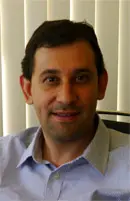A Look Inside Internet Engineering
17/04/2013


By Arturo Servín
Internet Engineering Task Force (IETF) meetings are held three times a year. These meetings are open to the international community of Internet network designers, operators, vendors and researchers, and the latest IETF meeting was held this past 10-15 March in Orlando, USA. The meeting was open to the public in general, and participants met to discuss interesting documents, hold working group meetings, and share networking opportunities.
This IETF meeting was also special because there were important changes in the organization’s leadership. After six years as IETF Chair, Russ Housley left his position and the responsibility was transferred to incoming Chair Jari Arkko. During his tenure, Russ H. did a great job in different areas of the IETF, so Jari A. has a tough job ahead of him. Russ, however, is not leaving the IETF: he is now Chair of the Internet Architecture Board (IAB). During this IETF meeting there were also several changes in the composition of the IAB and the Internet Engineering Steering Group (IESG), a group made up by area directors and responsible for managing the IETF’s technical activities.
Before considering any technical highlights, it is worth noting that the possibility of organizing an IETF meeting in Latin America in the medium term was brought up. Along with a heated discussion about “IETF diversity” that took place during the plenary session and on the mailing list, this can further promote the idea of a more global IETF.
During technical plenary sessions, the IAB always organizes panels on relevant Internet related issues. In the past, among others, topics such as measurements, Software Defined Networks (SDN), privacy, and IPv6 have been presented. This time, the chosen discussion topic was “End of POTS (Plain Old Telephone System).” Discussions included how IP (VoIP) is replacing previous communications protocols, challenges such as emergency services, availability and quality of service, and access to copper pairs. Catalysts for this change include changes from copper to fiber to provide greater capacity, from fixed to mobile access to allow mobility and access in rural areas, and particularly from circuits to packet networks to allow greater flexibility and a lower per-bit cost.
As to the IETF working groups, it would be impossible to provide a complete summary of what went on in the various groups, but I would like to highlight some relevant conclusions of the groups in which I participate and on issues that, in my opinion, are relevant to the Lacnic community. The first of these groups is WEIRDS (Extensible Web Internet Registration Data Service), the group that is standardizing the registration data service (also known as whois) for Internet name and address registries. The group has already made progress in terms of standardization documents and during this meeting we were able to perform some interoperability testing with Lacnic’s pilot service (http://rdap.labs.lacnic.net/rdap/).
Another group in which we are actively involved is SIDR (Secure Interdomain Routing), which is standardizing RPKI and BGPSEC. Right now we are working on multiple documents that will allow strengthening RPKI architecture. Some of these documents have been authored by members of the Latin American community, such as draft-rogaglia-sidr-multiple-publication-points. Other documents authored by members of the regional community include opsec (draft-ietf-opsec-ipv6-implications-on-ipv4-nets), 6man (draft-gont-6man-predictable-fragment-id), and v6ops (draft-lopez-v6ops-dc-ipv6), all of which are also important groups to follow as they define improvements to the IPv6 protocol (6man) or describe IPv6 operating (v6ops) and security (opsec) practices.
(Free access, no subscription required)
We invite anyone interested in these topics to join the IETF mailing lists to discuss previous drafts and support the adoption and/or publication of these documents.
Finally, a couple of IETF topics I believe are important for the Lacnic community are the replacement of RFC 2050, which describes the foundations and interactions between the IETF and the Regional Internet Registry system (draft-housley-rfc2050bis-00), and the potential allocation of an IPv6 block as LISP EID Block (draft-ietf-lisp-eid-block and draft-iannone-lisp-eid-block-mgmnt). For both these topics, we invite the Latin American ISP community to participate in the IETF’s general discussion and LISP working group mailing lists.
I would also like also like to take this opportunity to congratulate the Internet Society’s Technical and Policy Fellows [1] for their active participation at the IETF 86 meeting.